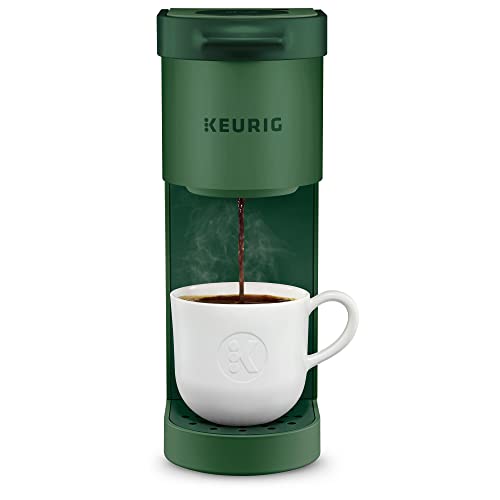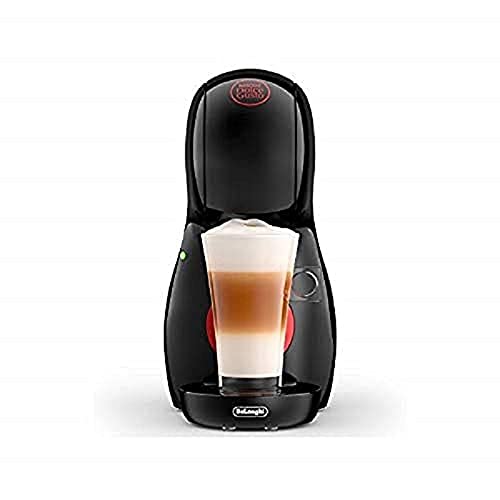See What Coffee Machine And Pods Tricks The Celebs Are Using
페이지 정보
작성자 Albertina 작성일24-12-14 23:33 조회8회 댓글0건관련링크
본문
 How to Choose Between Bean-To-Cup and Pod Coffee Machines
How to Choose Between Bean-To-Cup and Pod Coffee Machines Pod coffee capsule machine machines use coffee that has been ground and sealed in a capsule or pod for single-serving. They're easy to operate - simply fill the tank with water and then insert the pod and press a button.
Pod coffee capsule machine machines use coffee that has been ground and sealed in a capsule or pod for single-serving. They're easy to operate - simply fill the tank with water and then insert the pod and press a button.It's a little less fresh tasting than ground or filter coffee machines capsules, but still suitable for the majority of people. Cleaning and maintenance is also reduced.
Cost
If you are planning to purchase a coffee machine for your home, you should know the difference between pods and bean-to cup machines. Coffee pods are often more expensive than whole coffee beans. Additionally, they could produce more waste than other methods of brewing, leading to environmental concerns. To choose the best coffee machine, you should consider the advantages and disadvantages. The best choice will be contingent on your personal preferences and preferences.
Pod machines tend to be less expensive than bean-to-cup machines however their operating costs are higher. The cost of purchasing and replacing coffee pods goes up quickly. A pod coffee maker will require more maintenance, like cleaning the grinder and the brewing mechanism. A bean-to cup machine, however, requires less frequent maintenance and cleaning.
The environmental impact of pod making machines coffee machines is a controversial issue. Many have expressed concerns that they are more destructive to the environment than other coffee-making machines. Many have claimed that the plastic used in making coffee pods was not recyclable. Researchers have found that pods are not as residuary as previously believed.
Some coffee pods are made from compostable materials and can be used to fertilise the soil or decompose naturally and make room for other things. Others are made of recycled plastics that can be disposed of in food waste or landfill bins. In addition, some companies are producing 100% organic, compostable coffee pods.
Some coffee pods could be made of glass or aluminium however, the majority are made of plastic. These are more difficult to recycle, and the majority of recycling facilities are unable to accept them. The plastic in coffee pods is the primary source of waste generated by these machines, however the glass and aluminium could end up in landfill sites or in oceans. The number of plastics that can be recycled has grown, and new recycling schemes are being designed to enable the reuse of these materials.
Freshness
There are a variety of options when it comes to brew coffee, but the coffee pod machine is the best choice to find an efficient and simple method to make coffee without mess. These machines can make delicious cups of coffee in just one or two minutes, and are available in a wide variety of flavors. They are also more convenient than traditional filter coffee makers that require grinding beans and boiling water.
The convenience of the coffee machine and pods (click through the next webpage) pod isn't the only reason people use them however. In addition to their ease of use they are also eco friendly. According to an Ocean Conservancy study, brewing the coffee with pod makers produces less greenhouse gases than brewing with filters. Many consumers are still concerned about the environmental impact of coffee pods made for single-use.
The majority of pods are plastic and, despite being recyclable however, only a small percentage is. Other environmental effects can be significant including the pollution of landfills and waterways. This is why several cities have been able to ban coffee pods. Keurig, Nespresso and other companies provide recycling bags for free as well as pre-paid UPS labels for returning capsules that have been used. The company's aluminum pods can also be reused however, they'll require a thorough cleaning of coffee residues before they can be reused by recycling facilities.
Certain brands of coffee pods have the "best before" date on the product. This mark indicates the date at which the coffee pods will not be brewed at their peak, but they are safe to consume after this date. These dates are typically printed on the coffee pods' packaging, or on the box.
Although the impact on the environment of coffee pods differs, the majority of them contain coffee that is harvested and processed in a responsible manner. A pod coffee maker also reduces energy and waste, and each pod makes one cup. Nonetheless, there are several disadvantages of pod coffee machines like the requirement for maintenance on a regular basis and higher costs than traditional filter machines.
Convenience
A pod machine is a great option if you are a coffee lover, but lack the time to make your own. These pod-making machines eliminate the need to grind beans and measure water, then press buttons and tamp. These machines also offer a variety of drinks, including tea and hot chocolate. However these conveniences come at a price: they can cause harm to the environment. Many consumers are concerned about the fact that they are disposable products. There are ways to reduce the environmental impact of coffee pods and cups. For example, a new product called GreenPods is made of compostable materials that decompose in just two months. It's better over standard capsules or pods which can take up 500 years to break down.
Apart from the environmental impact, a coffee pod maker can be more expensive than other brewing methods. It could also not provide the same flavor and quality as a machine that makes coffee. If you intend to use a variety of pods, then you'll need to purchase a machine for each pod.
The pod coffee machines are available in various varieties, from basic models to high-end espresso and latte makers. When selecting a machine, consider your budget and available counter space. Some models are smaller and less expensive than others, while certain models come with additional features like milk frothers or customizable settings. You'll need to decide on how often you plan to utilize the machine, and which features are most important to you.
The best coffee maker will make your homebrewing experience more enjoyable. You'll find many different models to choose from, but picking the right one can be difficult. The best coffee machines can provide the quality you're looking to achieve and blend perfectly with your kitchen. You'll also require an appliance that is simple to operate and maintain.
No matter if you're a coffee lover or not, a bean-to-cup machine can transform your morning routine. These machines grind and make coffee in the right proportions to produce a rich, fragrant beverage. You'll reduce your expenses by reducing the amount of coffee that you buy.
Environmental impact
A pod coffee machine makes use of pre-packaged capsules ready to make a cup hot coffee. It is a popular choice for consumers who don't want to waste time grinding coffee beans and measuring the grounds themselves. However, there are concerns regarding the environmental impact of this type of machine. Recent research by environmental engineers has revealed that coffee makers generate lots of waste, including metal and plastic which are not biodegradable. Many people are also concerned that the machines use too much energy.
The study, published earlier this month focused on the emissions produced by filtered coffee, French press, instant coffee and single-use pods. It concluded that when people did not over-fill their pods and used electricity and water sparingly, they might actually be better for the environment than drip-brewing.
It's crucial to think about the bigger picture, when looking at these results according to Boykoff. He says that media coverage of this sort can often distract us from the main sources of climate-related emissions - and they're more significant than your morning cup of coffee.
One of the biggest problems is that a lot of these pods with a single use aren't recyclable. While companies such as Keurig or Nespresso claim their pods are recyclable, in reality they must be broken down into component parts. This means that many coffee pods end up in landfills, where they pollute the environment.
The new reusable pod PodMkr is made from an elastic material that allows for complete and easy recycling. The website of the company allows you to purchase the pods for a wide range of coffee makers. The company hopes to get consumers to choose a more environmentally friendly solution from single-use pods.
While it is possible to recycle coffee pods, it's difficult to find a location for them in your local recycling program. A bean-to cup machine is a better alternative, as it grinds coffee beans on demand and eliminates the requirement for pods that are only used once. It's also a more economical option in the long run, because it reduces environmental waste and costs less to maintain.
댓글목록
등록된 댓글이 없습니다.
